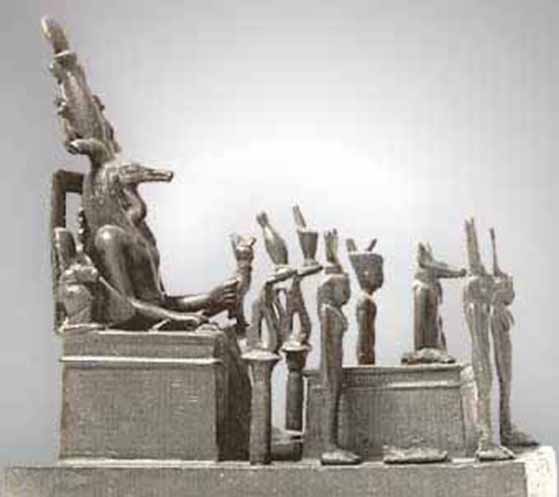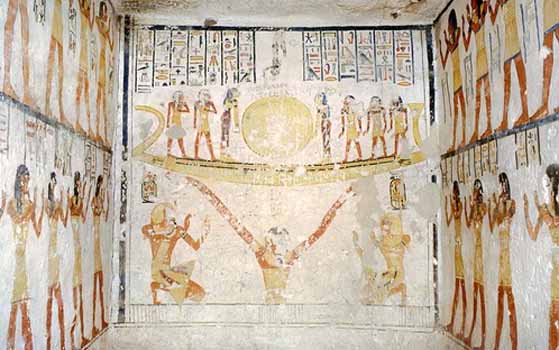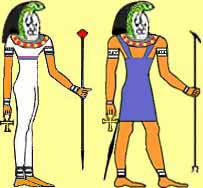





In Egyptian mythology, the Ogdoad are the eight deities worshipped in Hermopolis. The gods of the Ogdoad were mostly seen as humans with their animals' heads, or just depicted as snakes and frogs. They were arranged in four male-female pairs, with the males associated with frogs, and the females with snakes. [Frogs are assciated with biogenetic experiments. Snakes represent human DNA.]
The Egyptians believed that before the world was formed, there was a watery mass of dark, directionless chaos. In this chaos lived the Ogdoad of Khmunu (Hermopolis), four frog gods and four snake goddesses of chaos. [Balance in infinity]
These deities were Nun and Naunet (water), Amun and Amaunet (invisibility), Heh and Hauhet (infinity) and Kek and Kauket (darkness).
The chaos existed without the light, and thus Kek and Kauket came to represent this darkness. They also symbolized obscurity, the kind of obscurity that went with darkness, and night.
The Ogdoad were the original great gods of Iunu (On, Heliopolis) where they were thought to have helped with creation, then died and retired to the land of the dead where they continued to make the Nile flow and the sun rise every day.
Because of this aspect of the eight, Budge believe that Kek and Kauket were once deities linked to Khnum and Satet, to Hapi - Nile gods of Abu (Elephantine). He also believed that Kek may have also been linked to Sobek.
Together the four concepts represent the primal fundamental state of the beginning, they are what always was. In the myth, however, their interaction ultimately proved to be unbalanced, resulting in the arising of a new entity. When the entity opened, it revealed Ra, the fiery sun, inside. After a long interval of rest, Ra, together with the other gods, created all other things. There are two main variations on the nature of the entity containing Ra.
The original version of the myth has the entity arising from the waters after the interaction as a mound of dirt, the Milky Way, which was deified as Hathor.
In the myth an egg was laid upon this mound by a celestial bird. The egg contained Ra. In the original version of this variant, the egg is laid by a cosmic goose (it is not explained where the goose originates). However, after the rise of the cult of Thoth, the egg was said to have been a gift from Thoth, and laid by an Ibis, the bird with which he was associated.
Later, when Atum had become assimilated into Ra as Atum-Ra, the belief that Atum emerged from a (blue) lotus bud, in the Ennead cosmogeny, was adopted and attached to Ra. The lotus was said to have arisen from the waters after the explosive interaction as a bud, which floated on the surface, and slowly opened its petals to reveal the beetle, Khepri, inside. Khepri, an aspect of Ra representing the rising sun, immediately turns into a weeping boy - Nefertum (young Atum), whose tears form the creatures of the earth.
In later Egyptian history, as the god Khepri became totally absorbed into Ra, the lotus was said to have revealed Ra, the boy, rather than Ra being Khepri temporarily.
Sometimes the boy is identified as Horus, although this is due to the merging of the myths of Horus and Ra into the one god Ra-Herakty, later in Egyptian history.

Ennead